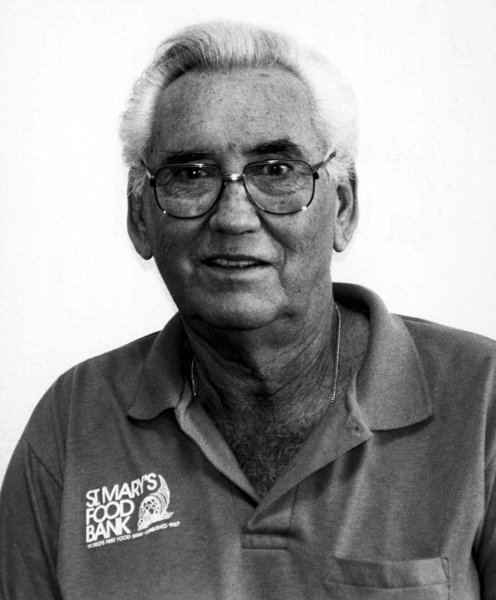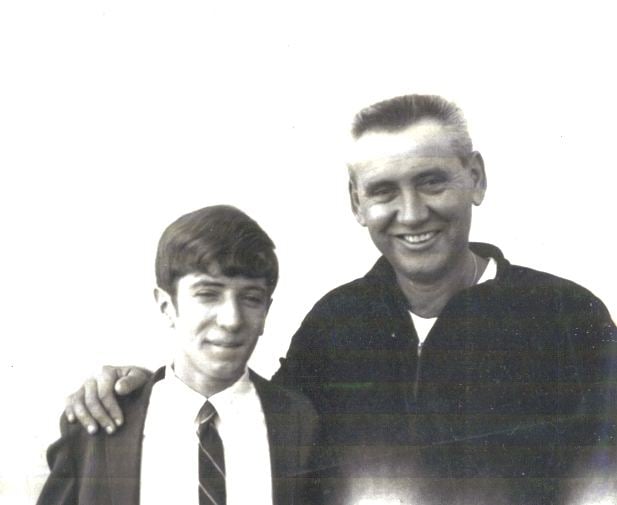Name John Hengel | ||
 | ||
Died October 7, 2005, Phoenix, Arizona, United States | ||
John Arnold van Hengel (February 21, 1923 – October 5, 2005) is credited as being the “Father of Food Banking.” In 1967 van Hengel, a grass roots activist and entrepreneur, founded the world’s first food bank in Phoenix, Arizona. He continued to spread the food banking concept across the United States and eventually the world.
Contents
- Early years
- Start of the Food Bank Journey
- The Second Harvest and Global Food Banking
- Honors and awards
- Summation
- References

Early years

John van Hengel was born in Waupun, Wisconsin. Of Dutch ancestry he was the son of a nurse and the town pharmacist. He graduated from Lawrence College in Appleton, Wisconsin with a degree in Government. John then attended graduate school at University of Wisconsin but moved to Southern California before finishing. Spending time as a self described “first rate beach bum”, van Hengel moved on to study broadcasting at UCLA. Odd jobs included driving a beer truck in Beverly Hills, designing plastic rain wear, a sales manager for Bear Archery and a magazine publicist. John married a model and had two sons. In 1960 his marriage ended in divorce and he headed back to Wisconsin and went to work in a rock quarry. He became partially paralyzed while breaking up a bar fight. He was sent to Arizona for rehabilitation through the guidance of Barrows Neurological Institute.

John regained his strength swimming laps in a YMCA swimming pool and at the age of 44 became the oldest public lifeguard in Phoenix, Arizona.
Start of the Food Bank Journey

John took a vow of poverty upon starting his life in Phoenix. A devout Roman Catholic, John began working at Immaculate Heart Church in Phoenix where he drove the bus and coached sports. He also began volunteering at the very busy St. Vincent de Paul Soup Kitchen. John bought an old milk delivery truck for $150 and used it to gather gleaned citrus fruit and other foods to bring to the soup kitchen. Every evening John would deliver any surplus to the homeless missions in downtown Phoenix. Searching for an efficient, less time consuming method of distributing this food, John approached Father Ronald Colloty from St. Mary’s Basilica in regards to setting up a warehouse where the missions could come and pick up the food. The church responded by loaning John $3000 and an inherited bakery building near skid row. John expanded his food resources upon a discovery behind local grocery stores. A destitute mother of 10 well fed children pointed out “a bank of food” from which she fed her family. Huge amounts of surplus food being thrown out by grocery stores. Food that was frozen but still edible, loose vegetables, stale bread. Inside stores John found less perishable throwaways such as dented cans and leaky bags of rice and sugar. Within a year John had established the location at which all the food that grocery stores could not sell would be housed and distributed. He named it St. Mary’s Food Bank in honor of the donation provided by St. Mary’s Basilica and the descriptive words of a resourceful mother. In accordance to his vow of poverty, John took no salary during his first decade at St. Mary’s. He wore secondhand clothes, got his food at the food bank and lived in a donated room above a garage.
The Second Harvest and Global Food Banking

In 1975 John accepted a $50,000 federal grant which would be utilized to establish eighteen food banks across America. In 1976 John left St. Mary’s Food Bank and established Second Harvest (now known as Feeding America). Guided by John, this organization established food banking standards and guidelines as well as acquisition of food from large national manufacturers. Businesses were able to cut the costs of disposing unusable but edible food as well as taking tax breaks by helping multiple charities.
In 1983 John left Second Harvest to establish Food Banking Inc. (which became International Food Bank Services in 1991 and is now known as Global FoodBanking Network). John served as a consultant to food banks around the world, traveling to Canada, Mexico, Brussels and Spain to oversee the start up of their food banks. John also helped establish food banks throughout Africa, Eastern Europe, Asia, South America and Australia.
Honors and awards
Summation
To quote Robert Forney, former CEO of Second Harvest and the Global Food Banking Network, "He's an ordinary man, complete with vices and sins and mistakes and all the other things all of us possess. He discovered how to tie together the public and private sectors in a common, aligned battle against hunger."
In 1987 using a ticket that was gifted to him, John van Hengel visited his Dutch relatives and roots. In a cemetery near Amsterdam he found the 1649 grave of Dirk van Hengel whose epitaph read “He fed the poor in Germany” The epitaph on John van Hengel’s resting place in Waupun, Wisconsin reads, “The poor we shall always have with us but why the hungry?”
